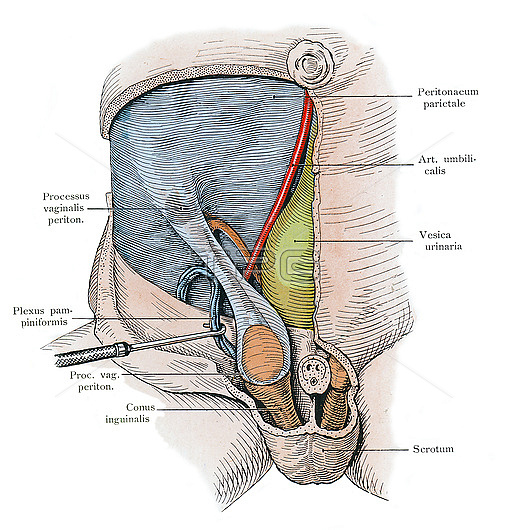
Testis descent, illustration. During weeks 26-28 of gestation the testes normally migrate and descend from their intra-abdominal position towards the developing scrotum. The testis (pink) is enclosed by an evagination of the peritoneum (blue, the processus vaginalis) and passes inferiorly through the inguinal canal (orange) into the scrotum. The spermatic cord (displaced by a hook) is shown together with the umbilical artery (red) and the urinary bladder (green). Undescended testes, unilateral or bilateral, are referred to as cryptorchid testes and occur in up to 30 percent of premature males and about 3 percent of full-term males. Most cryptorchid testes fully descend into the scrotum within a year after birth. Failure of the testis to descend into the scrotum results in impairment of testicular development and is invariably associated with failure of spermatogenesis. Persistent cryptorchidism in postnatal life is associated with a higher incidence of germ cell tumours. From Kollmann, J. (1907) Handatlas der Entwicklungsgeschichte des Menschen, vol 2, Fig. 445. G. Fischer, Jena.
| px | px | dpi | = | cm | x | cm | = | MB |
Details
Creative#:
TOP28610455
Source:
達志影像
Authorization Type:
RM
Release Information:
須由TPG 完整授權
Model Release:
n/a
Property Release:
n/a
Right to Privacy:
No
Same folder images:

 Loading
Loading